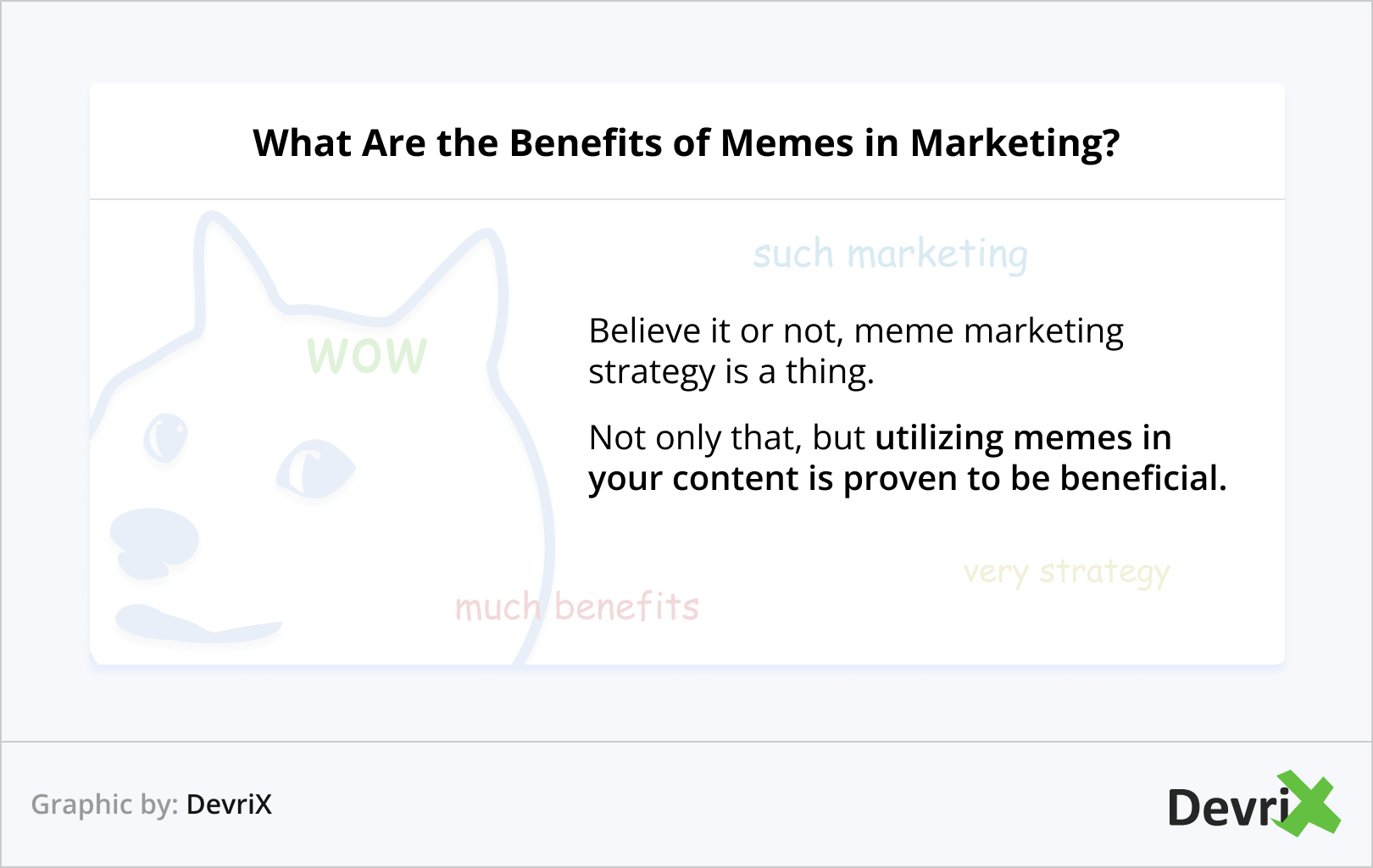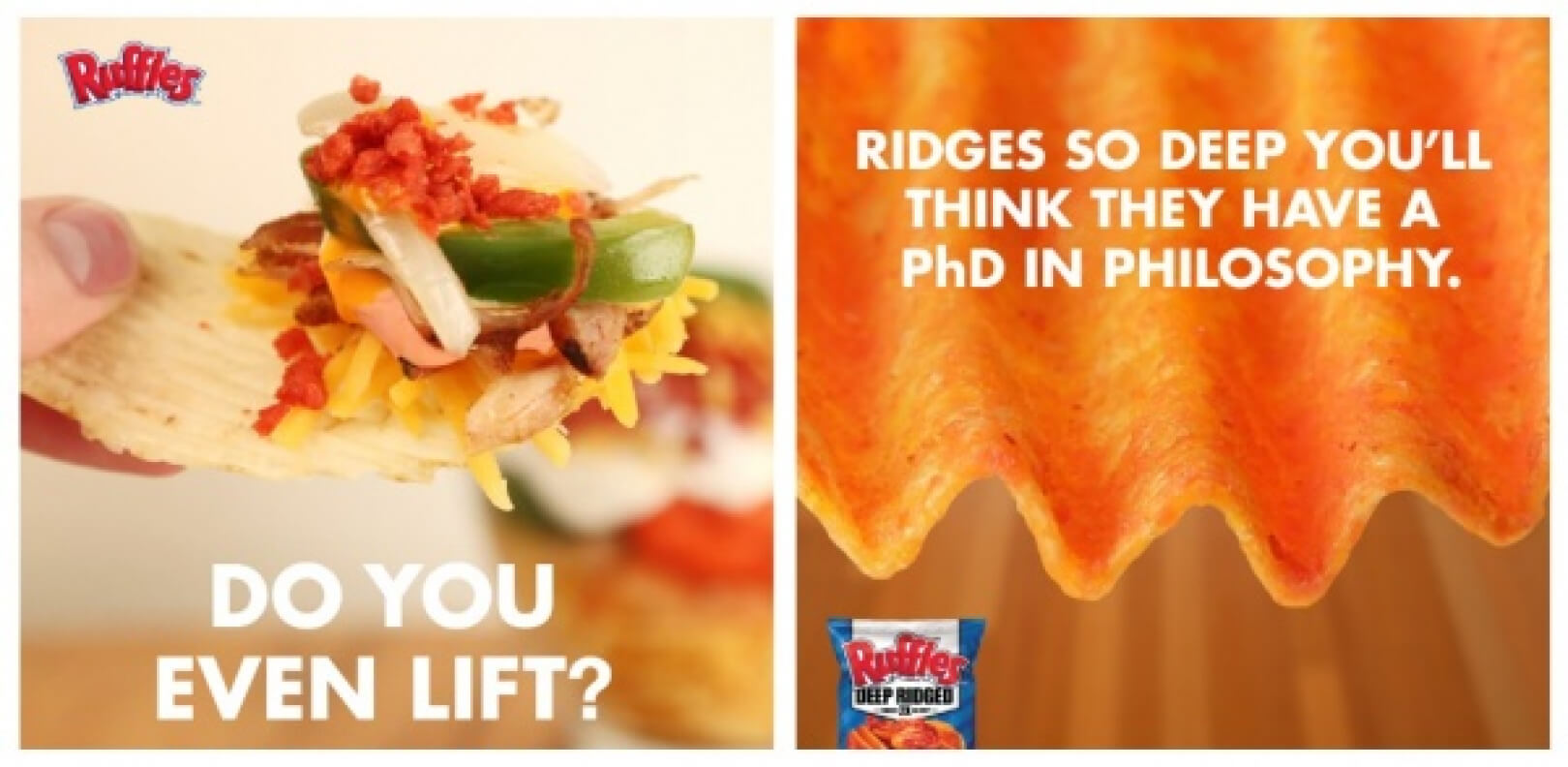During the past decade, memes have turned into a part of modern culture, a way to express emotions, and a rapidly-spreading humorous phenomenon.
Memes have crawled into every part of our lives, and business is no different. Meme marketing is not just a phase, it’s something to take seriously.
Moreover, the power of meme marketing is growing stronger to the point where you can’t open a digital device without seeing at least one of them.

Now, without further ado, let’s unleash the memes.
What Is Meme Marketing?
Meme marketing is when you use memes to power your content strategy and tell a narrative. It’s a fun way to enhance your content, costs nothing, and can greatly increase the share rates of an article.

Memes can be extremely effective, due to their shareability and carefree nature. They can become hot and viral very quickly, and this is exactly the reason why marketers tend to use them to boost the performance of their marketing content.
The concept of memes is not a new thing. In 1976, ethologist Richard Dawkins described the word “meme” in his book “The Selfish Gene”. Cultural evolution and the spreading of ideas like fashion, music, etc., is how he put it in words.
He was right, as, in the 21st century, memes evolved to the point where people use them as universal cultural symbols. In fact, over the years, they’ve become one of the most recognizable and popular languages on the internet.
Of course, not every meme will have great success. It depends on whether it’s actually funny and/or relatable, and if it’s toggling a relevant, widespread, and trendy topic.
A meme that’s only funny to a handful of people, or is an inside joke, is unlikely to become viral.

On the other hand, when it rains, it pours. When something big happens in the world – no matter if it’s in politics, art, or lifestyle – memes instantly take over.
Readers Also Enjoy: 10 Ways to Prepare for the Content Marketing Trends to Define 2022 – DevriX
Just think of the time when Will Smith hit Chris Rock at the Oscars, or the trial of Johnny Depp and Amber Heard. Memes flooded the internet, multiplying by the second.
Of course, you can try to start a meme trend by yourself – practically, everyone can, and that’s the beauty of it, but more about that later on in the article.
Now, to see what are the actual benefits of using memes in your marketing strategy, shall we?
What Are the Benefits of Memes in Marketing?

Believe it or not, meme marketing strategy is a thing. Not only that but utilizing memes in your content is proven to be beneficial.
Here’s why.
Memes Increase Engagement
Sharing a good meme is a guarantee for likes and shares, especially on social media where people go to relax, watch videos of funny animals, and – that’s right, you got it- look at memes.
Humor is always a nice way to make a good first impression and attract new customers. And what better first impression than to make someone associate your brand with positivity and coolness, since memes do just that.
The fact is, that 74% of millennials send memes to make people smile. And that’s the best kind of engagement.
Memes Are Free
Do you want to spend $0 on marketing and still get exposure? Get memes involved. However, it’s not all about them being free, that’s just a bonus.
People, more often than not, prefer memes over detailed designer creations like infographics. It depends on the person, naturally, but this is very true, especially when it comes to younger generations.

Memes are entertaining, easier to digest, and more engaging. As a result, they can convey information in such a way that it reaches the customers and sticks. Furthermore, as part of pop culture, memes have their own connotations, which means that you can say more with less.
Furthermore, most of the work has been done for you in advance. In fact, you don’t even need a graphic designer, because there are loads of free and easy-to-use meme generators. All you need is an original take on the meme to make it relevant to your content.
As a result, you make a maximal impact with minimal investment.
People Relate With Memes
Nowadays, most brands have adopted a more casual approach to communicating with their customers – they want to build a connection to them, a relationship. And one of the major advantages of memes is that they are very easy to relate to.
You can use them to establish common grounds with your audience, show them that you care about the same things, share the same values, or simply that you are witty and fun.
Furthermore, memes are proof that there are actual people behind companies, not just robotic sales machines, or a dystopian soulless corporation. They show you as down-to-earth and provide your customers with the feeling that they know the real you. Needless to say, this does wonders for your brand identity.
All in all, the clever usage of memes is one of the best ways to make your business more human and relatable.
How to Create a Marketing Meme
It’s fast and easy to create a meme, it takes seconds. However, you don’t want just any meme, you want one that will not only make an impression but bring benefits to your business.
Before you start creating a marketing meme, ask yourself these questions:
1. Know Who You Are Targeting
Just like any other marketing strategy, the first step is to research and analyze, or, simply put, to know your audience.
For example, millennials and Gen-Zs, as a target group, are interested in modern world innovations like Netflix series, Apple tech products or Revolut services. They are also very eco-oriented, passionate about traveling, and love to read.
Therefore, trying to target millennials with memes about things that do not interest them, like baseball, will have little to no impact.
Don’t forget that you should not be too sales-sounding, but rather, you need to strike a balance between promotion and engagement.
Think of what makes your product cool, what makes its users unique, what connects you and your clients?
It’s time for #SEO fun 👻 Drop everything and take a look at this perfect roundup of SEO memes created by @izzionfire ➡️ https://t.co/qVAVWzOTQY
Do you have your favorite marketing memes? Share them in comments👇 pic.twitter.com/YrPQBg6LOy
— Semrush (@semrush) September 3, 2019
2. Make Your Meme Original with a Twist
Recycling memes that have already been overused is not a good idea. Everyone is sharing memes, as it is, so you need to be original to stand out.
It’s okay to use a popular meme, however, first you need to be certain what it means, and then try to figure out how to align it with your branding and identity.
If you manage to successfully think of ways to integrate your brand name, logo, or slogan, this will make your meme more original and your brand more memorable.
Simply put, even if you are using a popular template, you have to try to give it a twist.
3. Hitch a Ride on Trending Topics
Establish what’s buzzing around different social media platforms like Facebook, Twitter, and TikTok. Is it something your customers may care about or that everyone cares about? Maybe you can connect this to your own niche and product in an original way?
The right time and topic are the key ingredients to helping your meme go viral. This means that you should always be alert for interesting new events – where there’s scandal, there are memes.
Be careful not to overdo it, though. Spamming memes non-stop could make your audience think you’re just trying too hard.
Also, tread carefully with sensitive topics, as how you memefy those can affect your business reputation.
Examples of Memes That Went Viral
Here are some great examples of how brands used memes in marketing:
Ruffles
This potato chips giant has a history of using clever memes to make their brand more memorable and fun. One such example is their use of trending pop culture references to promote their new line of chips.

General Electric
What does it take to acquire 12,000 followers on Pinterest? A couple of memes, apparently, or at least, that’s how General Electric did it.
Using the popular “Hey, Girl” meme as an inspiration, this brand replaced Ryan Gosling with Thomas Edison, and ended up with a nice, simple idea, which did the job.

Yappy
Yappy is another company that’s no stranger to memes. They are a pet store brand, and this meme is designed to tease their audience who are, apparently, always looking for new ways to adopt more animals.
Denny’s
The breakfast chain restaurant is one of the most pro-meme brands, constantly utilizing social media to promote their memes. In fact, they are so involved with memes that they have their own line of them.
Bonus Tips for Meme Marketing
Here are some additional meme marketing tips and good practices to consider when making memes for your content strategy:
Don’t Be Mean or Aggressive
Fun is fun, but there’s no need to be offensive or aggressive towards groups of people. You might think your meme is funny, but that might not be the case for everyone.
That’s why you should always ask yourself if the meme contains insulting or strong phrases, does it ridicule certain groups of people or communities, and does it contain suggestive imagery?
If any of these is a “yes” or could be taken the wrong way, you should probably rethink your meme before uploading it.
Obey the Unwritten Rules
Memes are a free form of expression, true – freedom of speech at its finest. Still, there are a few unwritten rules to follow, in order to do a meme the “right” way:
- Keep it short and simple, with large text that is easy to read.
- Stick to the original meaning of the meme, as changing it would confuse people. If you’re not sure what the structure of a meme is, you can always double-check it on Google.
- Never include CTAs in your meme. You might think it’s a good idea, but it will have the opposite effect, since people will get annoyed that you’re trying to force a sales approach, and that’s just not how things work with memes.
Stay On-Brand
The entire point is to adjust memes to your brand, not the other way around. Thus, always try to be authentic and consistent with your image, style, personality, and identity.
In practice, this means that not every meme will be appropriate for you to use, so be selective.
To make sure that meme marketing will not cause any issues for your business, consider adding rules and regulations about it in your brand guidelines. This way, everyone in your organization will know what’s ok and what’s not.

Wrap-Up
Nowadays, the digital population thinks in memes. In fact, the format has become a mixture of pop culture references, expressions, and feelings that creates an entirely new form of communication. Whole conversations can be done in memes only!
And your customers are fluent in this language.
Meme marketing has the power to elevate your brand to new heights, and won’t cost you a dime. All you need is creativity and to follow a few simple guidelines.
Take inspiration from successfully working examples and memefy your way to the top.






